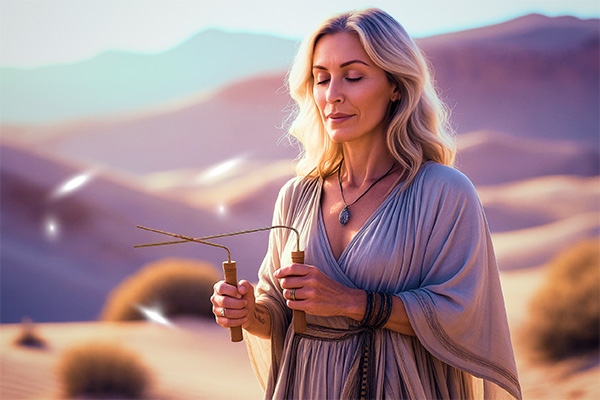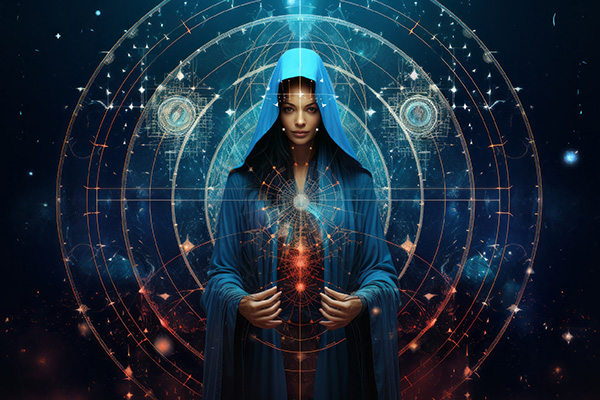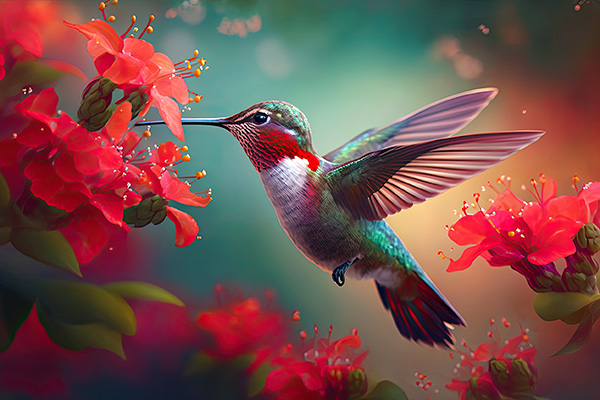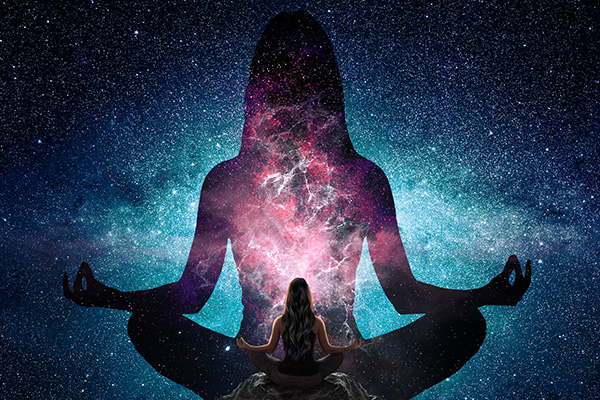intuition
Connecting With Gaia Through The Art Of Dowsing
 I’ve always loved working with dowsing rods. Over the years, I’ve used them in many different ways, such as tracking down lost car keys, finding jewelry, and locating missing household items in the most unlikely places.
I’ve always loved working with dowsing rods. Over the years, I’ve used them in many different ways, such as tracking down lost car keys, finding jewelry, and locating missing household items in the most unlikely places.
Dowsing is a wonderful intuitive practice. I’ve dowsed for many things over the years, but water dowsing has always fascinated me, because it connects nature and the physical world with the spiritual and mystical.
While digital technology and scientific methods have become the preferred tools used by engineers and geologists to accurately locate groundwater, pipes, and leaks, the ancient art of water dowsing is still practiced today. This practice is often called “water witching” in some parts of the United States.
Many farmers and homeowners still hire dowsers to find well locations, especially in rural areas. In fact, some professional water companies and utility providers have been known to also use dowsing rods to help locate pipes and leaks, alongside modern technology.
For me, this way of tuning into the earth’s natural flow and sensing what lies beneath the soil is deeply grounding and primal. It feels like aligning with the consciousness of the Earth herself, to Gaia, or Mother Nature. Gaia is more than a poetic metaphor; she is a living, breathing entity whose subtle energies speak to us if we know how to listen.
When I dowse for water, I feel as though I’m entering into quiet communion with her. I am attuning to her rhythms, her hidden pathways, and her silent wisdom. It’s a sacred act of reconnection, a reminder that we are not separate from nature, but part of her great, mysterious web of existence.
How To Deal With Energy Vampires And Psychic Bullies
 Someone or something draining your energy? Most of the time it’s someone whom you are either trying to please, or get approval from, or someone you’re trying to help. You may begin to notice that something changes in your energy field each time you are around this person, or that you feel an imbalance of some sort afterwards. When I say being around a person, this can mean exposure to them through meeting in person, texting, talking over the phone, and even energetically, or psychically.
Someone or something draining your energy? Most of the time it’s someone whom you are either trying to please, or get approval from, or someone you’re trying to help. You may begin to notice that something changes in your energy field each time you are around this person, or that you feel an imbalance of some sort afterwards. When I say being around a person, this can mean exposure to them through meeting in person, texting, talking over the phone, and even energetically, or psychically.
Energy bullies and psychic vampires are very good sucking the life force right out of you. Unfortunately, you may not notice this is happening, until after the fact. However, once you realize what has happened, identifying it is the first step to proactive healing, regeneration, and protection from allowing it to happen again.
Let’s have a closer look at what is actually taking place during an energy drain. Suppose you have a friend who is always complaining about her life, or often has a negative outlook on every situation she is involved in. This could also be a family member you meet for coffee, or whom you chat with over the phone regularly. And dealing with this person leaves you always energetically drained, deflated or emotionally unsettled.
I’d like to preface this with the fact that we all have times where we need to vent, or reach out for help when we are struggling with something. On the other hand, we also have moments where we need to be the voice of reason for someone else, or have an open mind and heart to listen and truly be there for the people we love and care about. Listening is so important in relationships, but if only one person is talking and one person is listening, over and over again, it is a drain on the listener.
Spiritual Awakening ‘Turns On The Light’
 What exactly is a spiritual awakening, and is there a way you can tell if you are having one? Here are some ways to be aware of what is happening to you.
What exactly is a spiritual awakening, and is there a way you can tell if you are having one? Here are some ways to be aware of what is happening to you.
The first sign is usually when you are no longer living in a ‘dream world,’ where you used to see everything through your human ego and you were overly focused on the future and your past.
This is a clear sign that you are becoming more spiritually aware. You have a greater awareness of your individual self and the connection between that and everything else. Things start to come into better focus in your life and make more sense.
When you closely examine various religions and faith traditions, there is usually a common thread that describes this state of heightened awareness as nirvana, enlightenment, or awakening.
This new consciousness happens when you stop being the observer, and instead ask yourself, who is observing?
Many people go through life on ‘autopilot,’ because that is what they were taught, or they simply fell into a routine without giving much thought to who they really are, or what they truly need or desire to make their life meaningful.
Asking such questions about yourself is important for your personal growth and self-realization. It is ‘turning the light on’ so to speak. The first step in growth is always the awareness of the present moment followed by an impulse to change something. Continue reading
When Your Man Is Not Ready To Commit
 I often hear how wonderful the guy is that she is dating… if only he would commit to taking their relationship to the next level!
I often hear how wonderful the guy is that she is dating… if only he would commit to taking their relationship to the next level!
If a woman is not satisfied with the way things are going and what she is getting from the relationship, should she continue to wait for him?
By patiently waiting for him against your better judgment, he only learns that he can get away with his lack of commitment, especially if he feels comfortable with what he is getting from the relationship. This way a pattern is formed.
So, how do you avoid wasting some of the best years of your life waiting on a guy that is never going to commit?
Well, right from the start you tell him what your looking for and what your expectations are. But handle it carefully, after all you don’t want to scare him away before things even get off the ground!
But do let him know how you feel about dating, long-term relationships, commitment, marriage, children, and whatever else may be important to you.
This will inform him, so that you have a better shot at being on the same page. If he starts to make excuses, or says that he is not interested in a long-term commitment, at least not right now, then accept his words as the truth.
If you are looking for long-term, committed relationship, then spend time with a guys who shares the same values and expectations. Watch his actions – they do speak louder than words!


